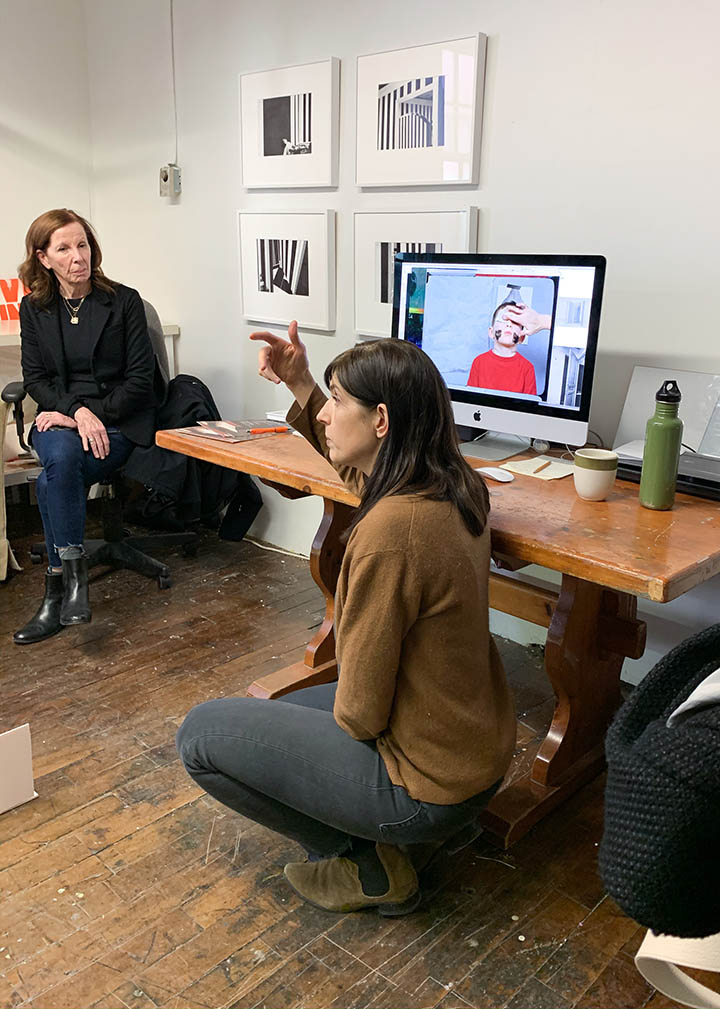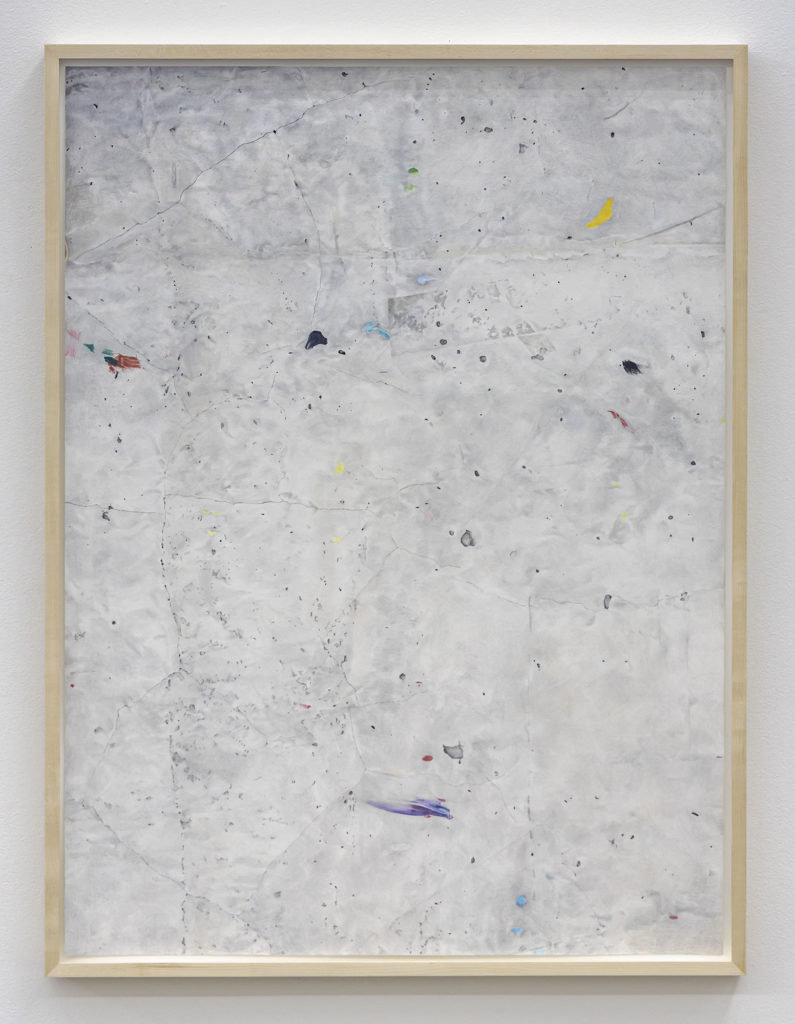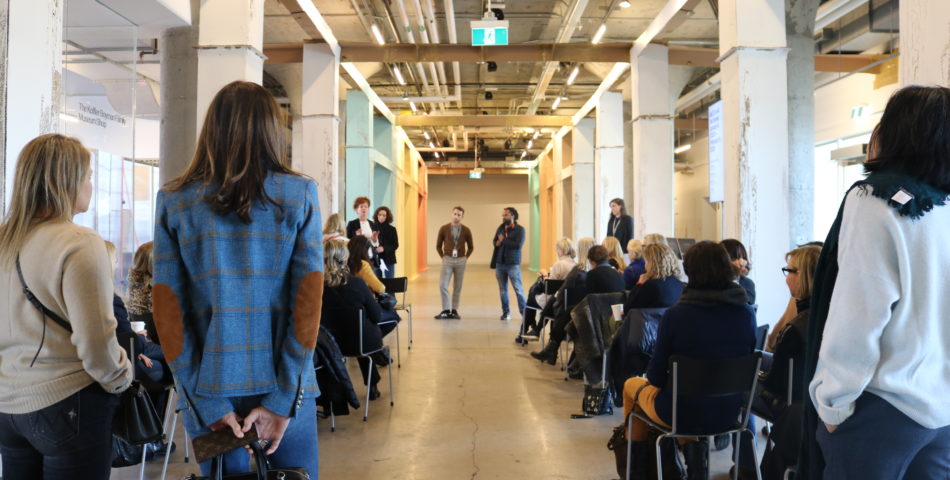On Thursday, March 5, Partners in Art visited the well-known Dovercourt studio building to see four prolific artists: Claire Greenshaw, Annie MacDonell, Katie Lyle, and Laura Findlay. Organized by members Rebecca Carbin and Kate Wivell, the tour was curated to highlight the vibrant studio practices of the artists, while also illuminating the building’s history, and the dire need for affordable studio spaces in the downtown core as developers uproot spaces. Gallerists Clint Roesnisch and Erin Stump also joined the tour, adding insights on the practices of Clarie Greenshaw and Katie Lyle, respectively, as artists they represent.

The organizers and Roenisch shared their knowledge of the studio building, and the ever-growing importance of such spaces that house up to 100 artists, collectives, and small businesses. PIA members learned such are incredibly valuable and rare for the artists, and the larger artistic community. The life cycle of artist buildings tends to follow similar histories: artists move to a particular neighbourhood due to low-cost housing and studios; the neighbourhood benefits from their cultural output; developers take note of the up-and-coming community and buy the once-affordable studio spaces, to tear down and build new residencies and condo towers. Artists are left once again looking for places to create and experiment. PIA members were told Dovercourt building has been slated for redevelopment, with the water already turned off in some studios, and artists looking elsewhere. Luckily, the artists were optimistic about using the time they had in the beautiful, light-filled studio spaces to create their impressive works.

PIA was impressed by artist Katie Lyle’s intuitive and researched painting style, taking cues from museological restoration processes to archive and revitalize old or damaged works. Fluctuating between addictive and subtractive techniques Lyle’s paintings were textural and energetic, revealing what was once applied, then taken away. Lyle’s past paintings and drawings investigated diverse aspects of the portrait, and now incorporate more psychic elements to create dynamic compositions.

Laura Findlay described her practice as one that uses geology, mainly volcanoes, as metaphors for past traumas. Painting idyllic, but ominous scenes of dormant and active volcanoes allowed Findlay to think of the landscape as emotional terrain. Findlay highlighted some other past projects including dynamic studies of nocturnal animals, and representations of the echo-location capabilities of bats. All of these things, Findlay states, promise renewal and potential.

Annie MacDonell shared her upcoming project which explores the vast history and theory behind using psychedelic drugs to cure or ease various forms of mental illness, including depression, post-traumatic stress, and addiction. MacDonell discussed how her videos explored the aesthetics of the 1960s counter-culture drug of choice that led to the moral panic about the effects of psychedelics on society as a whole.

Clarie Greenshaw explained her painstaking drawing processes, which yields ethereal, realistic yet ambitious drawings of everyday objects and art history references, sometimes juxtaposed with one another. Working from a feminist perspective, Greenshaw explained how her familial life influenced her work, finding the beauty and humour in “primal gestures” or marks made or found in commonplace settings, for example, the marked wall in a studio space, or water-stained backsplash in a kitchen.
